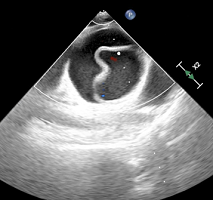1. WHO. Cancer Fact Sheet No. 297; 2017. Website. http:// www.who.int/mediacentre/factsheets/fs297/en. Accessed May 21, 2017.
2. Finks JF, Osborne NH, Birkmeyer JD. Trends in hospital volume and operative mortality for high-risk surgery. N Engl J Med. 2011; 364: 2128-2137. doi: 10.1056/NEJMsa1010705
3. Lucas DJ, Pawlik TM. Quality improvement in gastrointestinal surgical oncology with American College of Surgeons National Surgical Quality Improvement Program. Surgery. 2014; 155: 593-601. doi: 10.1016/j.surg.2013.12.001
4. Christensen T, Benedix T, Kehlet H. Fatigue and cardiorespiratory function following abdominal surgery. Br J Surg. 1982; 69: 417-419. doi: 10.1002/bjs.1800690721
5. Silver JK, Baima J. Cancer prehabilitation: An opportunity to decrease treatment related morbidity, increase cancer treatment options, and improve physical and psychological health outcomes. Am J Phys Med Rehabil. 2013; 92: 715-727. Website. http://onlinelibrary.wiley.com/doi/10.1002/cncr.28713/pdf. Accessed May 21, 2017.
6. Alibegovic AC, Sonne MP, Hojbjerre L, et al. Insulin resistance induced by physical inactivity is associated with multiple transcriptional changes in skeletal muscle in young men. Am J Physiol Endocrinol Metab. 2010; 299: E752-E763. doi: 10.1152/ajpendo.00590.2009
7. Lemanne D, Cassileth B, Gubili J. The role of physical activity in cancer prevention, treatment, recovery, and survivorship. Oncology (Williston Park). 2013; 27: 580-585. Website. http:// www.cancernetwork.com/survivorship/role-physical-activitycancer-prevention-treatment-recovery-and-survivorship. Accessed May 21, 2017.
8. Boshuizen RC, Vincent AD, van den Heuvel MM. Comparison of modified Borg scale andvisual analog scale dyspnea scores in predicting re-intervention after drainage of malignant pleural effusion. Support Care Cancer. 2013; 21: 3109-3116. doi: 10.1007/s00520-013-1895-3
9. Sabiston CM, Brunet J, Vallance JK, et al. Prospective examination of objectively assessed physical activity and sedentary time after breast cancer treatment: Sitting on the crest of the teachable moment. Cancer Epidemiol Biomarkers Prev. 2014; 23: 1324-1330. doi: 10.1158/1055-9965.EPI-13-1179
10. Nicolini A, Ferrari P, Masoni MC, et al. Malnutrition, anorexia and cachexia in cancerpatients: A mini-review on pathogenesis and treatment. Biomed Pharmacother. 2013; 67: 807- 817. doi: 10.1016/j.biopha.2013.08.005
11. Jie B, Jiang ZM, Nolan MT, et al. Impact of preoperative nutritional support on clinical outcome in abdominal surgical patients at nutritional risk. Nutrition. 2012; 28: 1022-1027. doi: 10.1016/j.nut.2012.01.017
12. Wolfe RR. The under appreciated role of muscle in health and disease. Am J Clin Nutrit. 2006; 84: 475-482. Website. http://ajcn.nutrition.org/content/84/3/475.long. Accessed May 21, 2017.
13. Burke LM, Hawley JA, Ross ML, et al. Preexercise aminoacidemia and muscle protein synthesis after resistance exercise. Med Sci Sports Exerc. 2012; 44: 1968-1977. doi: 10.1249/MSS.0b013e31825d28fa
14. Grey V, Mohammed SR, Smountas AA, et al. Improved glutathione synthesis in young adultpatients with cystic fibrosis supplemented with whey protein. J Cyst Fibros. 2003; 2: 195- 198. doi: 10.1016/S1569-1993(03)00097-3
15. Chen B, Zhou Y, Yang P, et al. Safety and efficacy of fish oilenriched parenteral nutrition regimen on postoperative patients undergoing major abdominal surgery: A meta-analysis of randomized controlled trials. JPEN J Parenter Enteral Nutr. 2010; 34: 387-394. doi: 10.1177/0148607110362532
16. Kitagawa R, Yasui-Furukori N, Tsushima T, et al. Depression increases the length of hospitalization for patients undergoing thoracic surgery: A preliminary study. Psychosomatics. 2011; 52: 428-432. doi: 10.1016/j.psym.2011.03.010
17. DiMatteo MR, Lepper HS, Croghan TW. Depression is a risk factor for noncompliance with medical treatment: Metaanalysis of the effects of anxiety and depression on patient adherence. Arch Intern Med. 2000; 160: 2101-2107. doi: 10.1001/archinte.160.14.2101
18. Rosenberger PH, Jokl P, Ickovics J. Psychosocial factors and surgical outcomes: An evidence-based literature review. J Am Acad Orthop Surg. 2006; 14: 397-405. doi: 10.5435/00124635-200607000-00002
19. Garssen B, Boomsma MF, Meezenbroek Ede J, et al. Stress management training for breast cancer surgery patients. Psychooncology. 2013; 22: 572-580. doi: 10.1002/pon.3034
20. Parker PA, Pettaway CA, Babaian RJ, et al. The effects of a presurgicalstress management intervention for men with prostate cancer undergoing radical prostatectomy. J Clin Oncol. 2009; 27: 3169-3176. doi: 10.1200/JCO.2007.16.0036
21. Larson MR, Duberstein PR, Talbot NL, et al. A presurgical psychosocial intervention for breast cancer patients. psychological distress and the immune response. J Psychosom Res. 2000; 48: 187-194. doi: 10.1016/S0022-3999(99)00110-5
22. Warner MA, Divertie MB, Tinker JH. Preoperative cessation of smoking and pulmonary complications in coronary artery bypass patients. Anesthesiology. 1984; 60: 380-383. doi: 10.1097/00000542-198404000-00022
23. Tonnesen H. Alcohol abuse and postoperative morbidity. Dan Med Bull. 2003; 50: 139-160.
24. Schnoll RA, Martinez E, Langer C, et al. Predictors of smoking cessation among cancer patients enrolled in a smoking cessation program. Acta Oncol. 2011; 50: 678-684. doi: 10.3109/0284186X.2011.572915
25. Kim SW, Kong KA, Kim DY, et al. Multiple primary cancers involving lung cancer at a single tertiary hospital: Clinical features and prognosis. Thorac Cancer. 2015; 6: 159-165. doi: 10.1111/1759-7714.12158
26. Cahill K, Stevens S, Perera R, et al. Pharmacological interventions for smoking cessation: An overview and network metaanalysis. Cochrane Database Syst Rev. 2013; (5): CD009329. doi: 10.1002/14651858.CD009329.pub2
27. Tønnesen H, Nielsen PR, Lauritzen JB, Møller AM. Smoking and alcohol intervention before surgery: Evidence for best practice. Br J Anaesth. 2009; 102: 297-306. Website. http:// www.medscape.com/viewarticle/588553_4. Accessed May 21, 2017.
28. Gillis C, Li C, Lee L, et al. Prehabilitation versus rehabilitation: A randomized control trial in patients undergoing colorectal resection for cancer. Anesthesiology. 2014; 121: 937-947. doi: 10.1097/ALN.0000000000000393
29. Silver JK, Baima J, Mayer RS. Impairment-driven cancer rehabilitation: An essential component of quality care and survivorship. CA Cancer J Clin. 2013; 63: 295-317. doi: 10.3322/caac.21186










